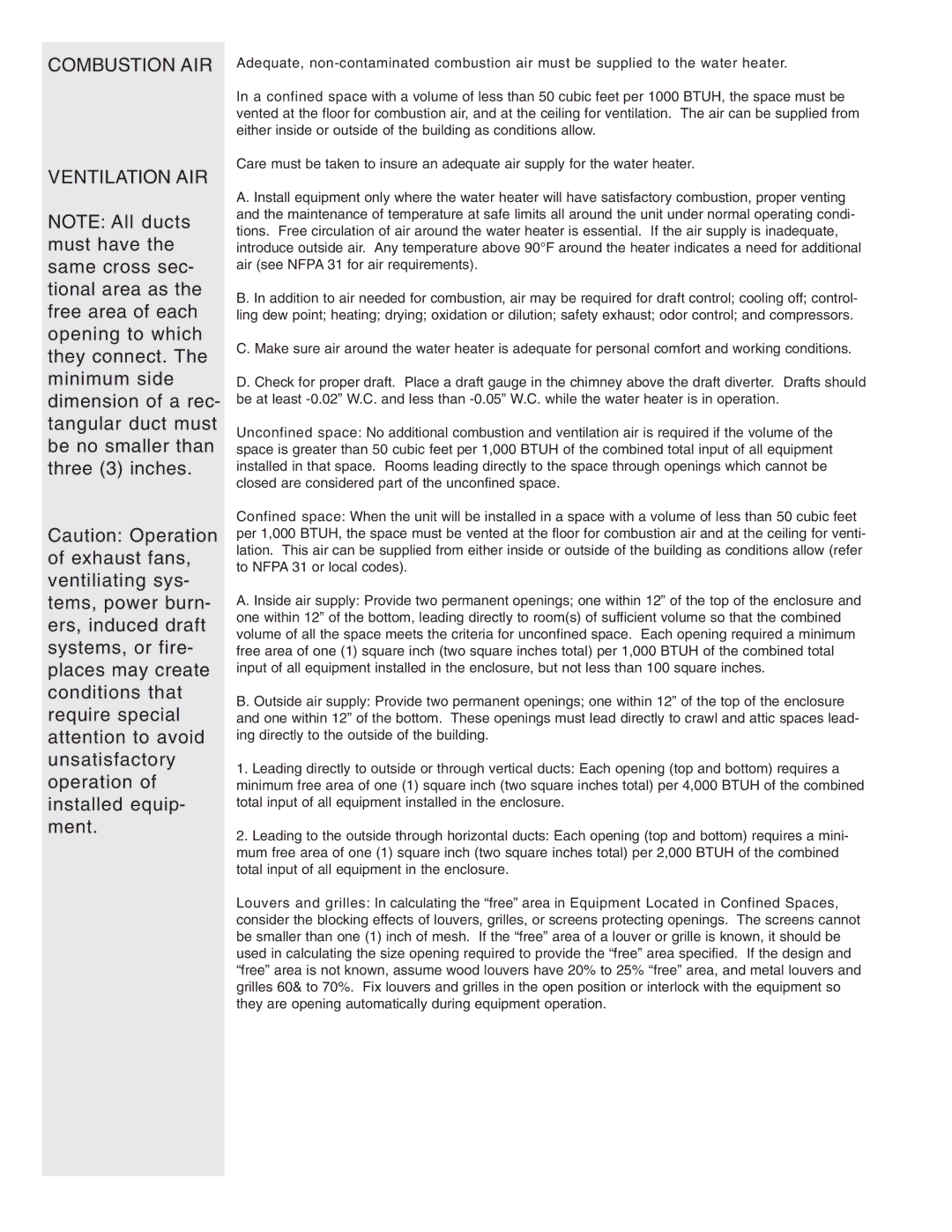200, 150, 250 specifications
Bock Water Heaters have long been recognized for their reliability and efficiency in providing hot water solutions for both residential and commercial applications. Among their popular offerings are the Bock Water Heaters 200, 150, and 250 models, each designed with unique features and technologies to meet varying demands.The Bock 200 is designed for smaller households or businesses requiring moderate hot water supply. This model incorporates high-efficiency insulation, which minimizes heat loss, ensuring that water is kept hot for longer periods. It is equipped with a robust burner system that operates on natural gas or propane, providing consistent heating even during peak demand. The Bock 200’s compact design allows for easy installation in limited spaces, making it an ideal choice for urban settings.
Moving to the Bock 150, this model is slightly smaller in capacity but boasts advanced technology that enhances its performance in a variety of installations. Its standout feature is its tankless water heating option, which provides hot water on demand, eliminating the need for a storage tank. This not only saves space but also leads to greater energy efficiency. The Bock 150 is often favored for applications where instantaneous hot water is desired, reducing wait times and energy costs.
The Bock 250 is the flagship model of the series, engineered for larger households or businesses with considerable hot water needs. This model features a high-capacity tank that can provide ample hot water for multiple simultaneous uses, making it perfect for restaurants, hotels, or large families. Its state-of-the-art heating system combines advanced burner technology with efficient heat exchangers, resulting in faster recovery times and lower operational costs. The Bock 250 also incorporates a digital thermostat that allows users to set precise temperatures, contributing to energy savings and enhanced safety.
All three models share key characteristics such as durable construction to withstand rigorous usage and an emphasis on energy efficiency, complying with modern environmental standards. With features like corrosion-resistant tanks and user-friendly controls, Bock Water Heaters continue to be a leading choice for those seeking reliable hot water solutions. The combination of advanced technologies, versatility, and thoughtful design in the Bock 200, 150, and 250 models ensures that there is a suitable option for every hot water requirement. Ultimately, a Bock Water Heater provides peace of mind through quality performance and longevity, making it an investment worth considering for any property.

